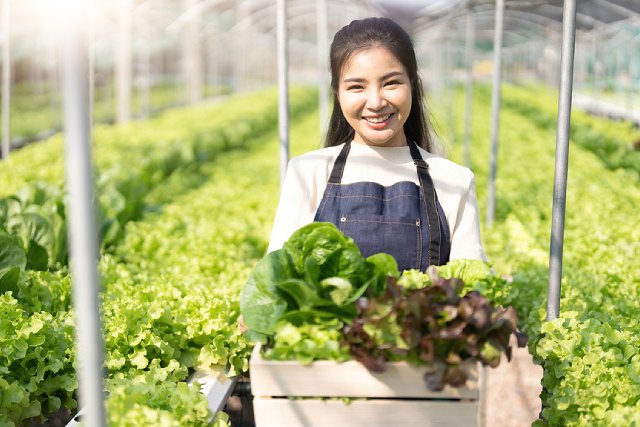
27 Dec Preventing Algae In Hydroponic Systems: Tips & Tricks
Starting a hydroponics farm in Singapore is an exciting venture, especially with the increasing interest in sustainable and space-efficient farming methods. However, like any farming system, hydroponics has its own challenges – one of the most common being algae growth. Left unchecked, algae can quickly turn a thriving setup into a frustrating battle, affecting the health of your plants and the efficiency of your system.
Algae thrive in nutrient-rich water and light-filled environments, which are essentially the perfect conditions in most hydroponic setups. While it might seem harmless at first, algae can clog your equipment, compete with plants for nutrients, and even attract pests. If you’re dealing with this issue or trying to prevent it, there’s good news: a few simple strategies can help you keep your hydroponic system algae-free.
Why algae grow in hydroponic systems
To effectively prevent algae, it’s helpful to understand why it appears in the first place. Algae need three key elements to thrive: water, nutrients, and light. Hydroponic systems naturally provide these conditions, making it essential to manage the system carefully to keep algae at bay.
Algae can grow on surfaces exposed to light, such as transparent containers, open reservoirs, and nutrient film channels. When algae bloom, it not only blocks essential light from reaching your plants but can also deplete oxygen levels in the water. This can lead to stress on your plants and impact their growth significantly.
Tips and tricks to prevent algae growth
1. Cover your reservoirs and equipment
Algae love light, so one of the easiest ways to reduce their growth is to block light from reaching your water reservoirs. Use opaque covers or dark-coloured containers to eliminate light exposure. For an added layer of protection, consider using reflective materials that redirect light away from the water.
2. Keep your system clean
Regular cleaning is critical for preventing algae buildup. Make it a habit to clean your reservoirs, pipes, and other equipment between planting cycles. A simple solution of water and food-safe bleach can help disinfect surfaces and kill any lingering algae spores.
3. Monitor nutrient levels
Overfeeding your plants with nutrients can lead to excess fertiliser in the water, which algae thrive on. Stick to recommended nutrient levels and avoid overloading your system. Investing in a reliable nutrient meter can help you maintain the perfect balance.
4. Use beneficial additives
Adding products like hydrogen peroxide or food-safe algaecides can help control algae without harming your plants. These additives work by oxidising organic matter in the water, making it less hospitable for algae. Always follow product instructions carefully to avoid disrupting the system’s balance.
5. Install a UV steriliser
For a high-tech solution, consider adding a UV steriliser to your hydroponic system. These devices emit ultraviolet light that kills algae spores as water passes through, keeping your system clean and algae-free.
Choosing the right hydroponic system
When you’re looking to buy hydroponic system setups, it’s essential to choose one designed to minimise algae growth. Systems with built-in light-blocking features, easy-to-clean components, and robust water circulation are your best bet. For instance, opting for systems with opaque channels and sealed reservoirs can drastically reduce the risk of algae.
Hydroponics is the key to urban food security today, offering a way to grow fresh produce sustainably, even in compact spaces. However, ensuring the long-term success of your hydroponic farm means tackling common issues like algae from the start.
Maintaining a balanced hydroponic environment
Preventing algae isn’t just about cleaning or blocking light. You also need a balanced environment where algae can’t thrive. Maintaining optimal water temperature, for example, is a simple yet effective strategy. Algae grow faster in warm water, so keeping your system cool (but not too cold for your plants) can limit growth.
Additionally, ensuring good water circulation can prevent stagnant areas where algae are more likely to grow. Aeration pumps and strategically placed outlets can help keep the water moving and oxygenated.
The importance of regular monitoring
Regular monitoring of your system is essential for catching algae early. Watch for signs of green or slimy buildup on your equipment and in your reservoirs. If you notice algae forming, address it immediately to prevent it from spreading.
Using sensors and smart monitoring tools can also give you real-time data on your system’s light exposure, nutrient levels, and water conditions, making algae prevention a lot easier.
Conclusion
Algae can be a pesky problem in hydroponic systems, but with a bit of vigilance and the right techniques, you can keep your setup clean and productive. From covering your reservoirs to investing in high-quality equipment, every step you take adds to the long-term health of your farm.
Looking for reliable components to enhance your hydroponic system? Vicplas offers a comprehensive range of quality products that are sustainable and safe for agricultural use. Equip your system with the best tools to ensure smooth operation and prevent algae growth effectively!
